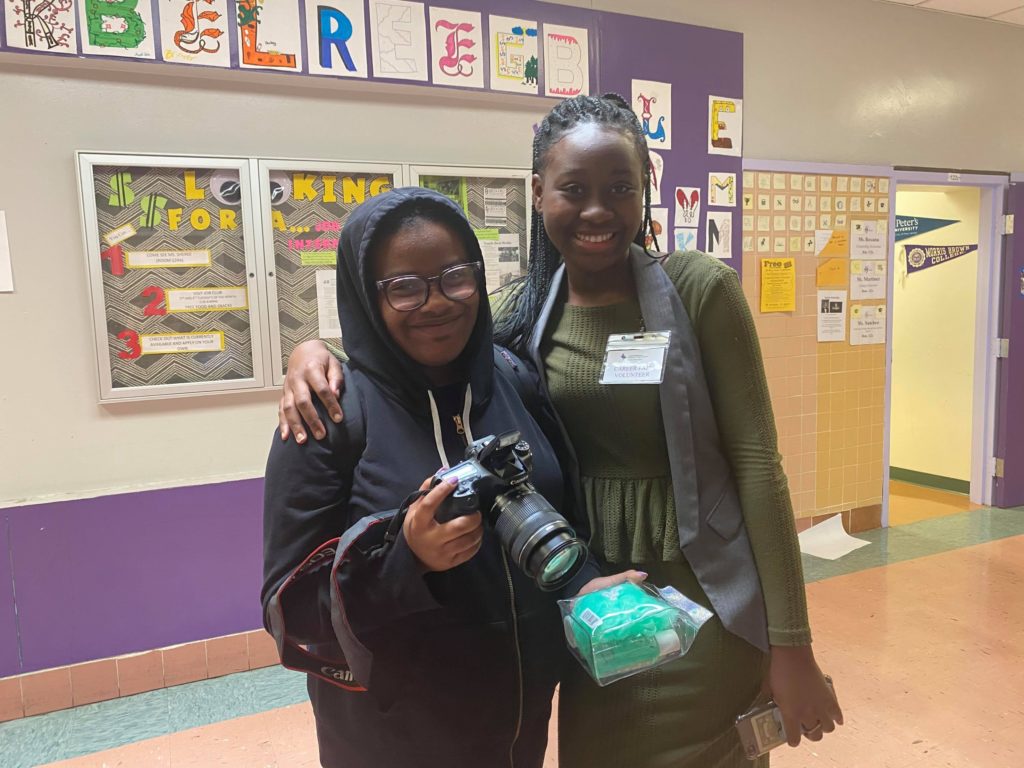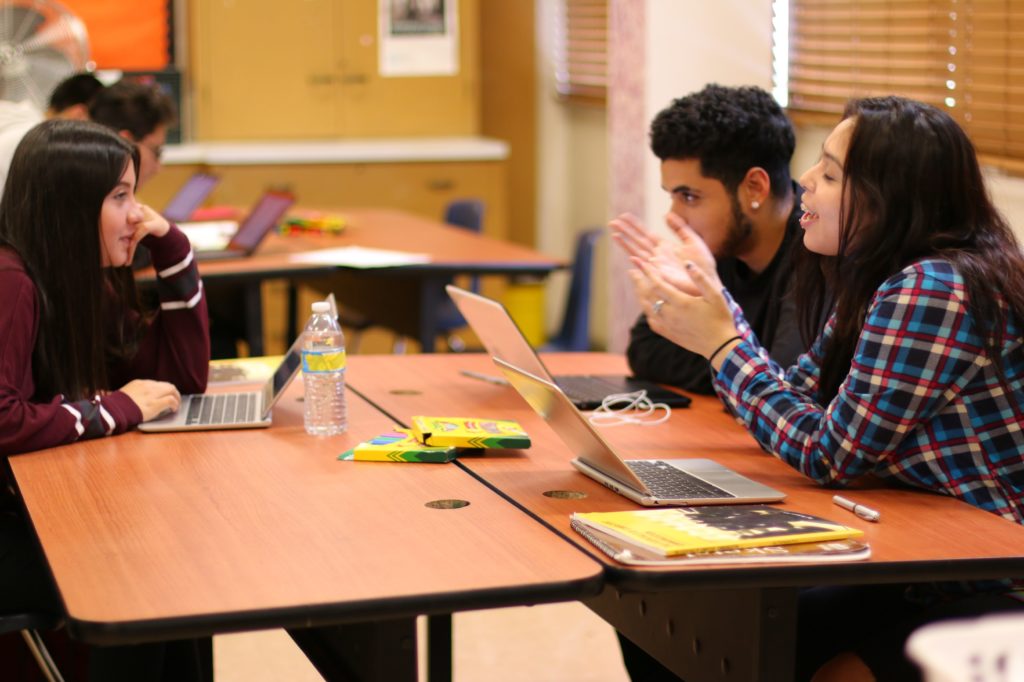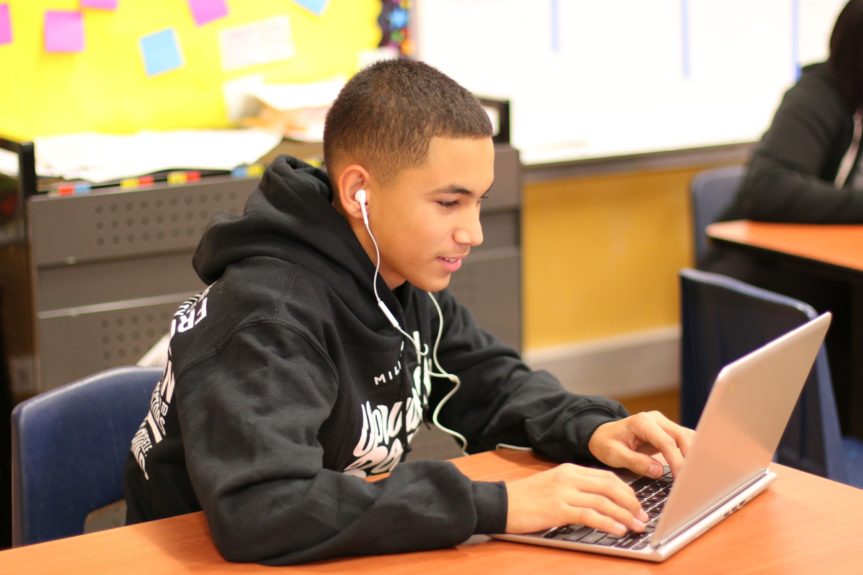“We know our students well enough to know that there are certain situations that are a little bit more challenging for them. And that access is going to be key. And in order to get students to really feel bought into any kind of academic piece, the first thing is always the relationship.”
For the co-principals, Lisa Pitters and Amy McGeorge, and educators of Leadership Public School (LPS) Oakland R&D in East Oakland, it was really hard to let their students go during the week leading up to the day school shut down on March 12.
According to Pitters who spearheaded the logistics, the staff and educators had been preparing for the shutdown to happen, so they were able to react quickly. School closures were announced on Thursday. By the end of the day Friday, they had distributed over 400 Chromebooks and chargers. Since then, Kokou Katamani, the school’s tech coordinator, has held office hours twice a week to continue distribution to students absent that day and help with problems. Hotspots were purchased and delivered to the homes of any with limited wifi to ensure that 100 percent of the students had home technology access. But that was just on the technology side.
In those trying days before the closure, with uncharted territory ahead, the LPS staff members weren’t just handing students chromebooks and distance learning education plans.
They were also thinking frantically about anything their students could need, and trying to give them every piece of education and knowledge possible before they had to physically say goodbye for who knew how long.
“I think the main thing that drove our staff to just be called to that work so quickly is that we were all really worried about our students and have really good relationships with them,” said LPS co-principal Amy McGeorge. “So we’re trying to give them everything we could, while we could still have them in the building with us.”

The transition to distance learning is a steep challenge for any school. It’s exponentially more difficult for a school like LPS R&D, which serves a high-needs student population: 98 percent of the students are low-income and ⅓ are English learners.
Student needs go far beyond a computer and a plan. The challenges stack up: students who don’t have access to wifi at home; families who are food insecure; older students who have to take on jobs to support their families; the mental health issues and PTSD too many young people are forced to manage growing up in East Oakland. When one student’s family faced unfair and traumatizing treatment from their landlord, the co-principals and LPS clinical psychologist Dr. Oscar Ureño worked together to provide mental health support alongside assistance with accessing legal and housing services.
“We know our students well enough to know that there are certain situations that are a little bit more challenging for them,” McGeorge said. “And that access is going to be key. And in order to get students to really feel bought into any kind of academic piece, the first thing is always the relationship.”
That is particularly true for special education students who can struggle with distance learning. Andy Buselt, special education coordinator, talked about the outreach to those families that began immediately, “We’ve conducted IEP meetings over the phone with all families to offer comparable SPED services including speech services, and mental health counseling,” he said. “Service providers connect regularly with students in a variety of ways including text messages, phone calls, emails, google classroom, and zoom meetings.”

Outreach was not limited to students with special needs. The school leaders have made sure every student had a point of contact at the school, and that someone was always in touch. Each educator pledged to reach out every day to each of the 20–25 students in their Advisory. The school quickly organized a system for keeping track of these contacts and collaborating to respond to needs and challenges as they arose.
In the middle of a pandemic, it’s not business as usual for anyone, least of all young people who have to adjust to a new way of learning that, as Pitters points out, “they didn’t sign up for.”
So while the LPS staff started off with 2-week education plans for students, they had to pivot quickly and adjust to the students’ needs. “Adjustments on the fly?” Pitters said. “That’s what we do.”
But that doesn’t mean academics fell by the wayside. These educators are experienced in not letting outside influences overwhelm a students’ education: they’re experienced East Oakland educators, after all.
“I think our message to students is that, things happen in our community a lot, and we’re always going to talk about that,” McGeorge said. “And we’re always going to continue to provide access to an education. And that’s always our focus. So it really hasn’t shifted. It just means we have to be more creative.”
Putting students’ needs first is fulfilling the mission of Leadership Public Schools, said Dr. Pat Saddler, LPS Superintendent.
“Oftentimes, schools are designed to ensure that the instructional program is standards aligned, and is measured by the percentage of students proficient on a mandatory test” Saddler said. “And while that is all very important to us, I also feel that LPS staff’s commitment to valuing the holistic needs of the students will in the end create young people that are better prepared to embrace our mission and vision; to be college and career ready, and equipped to enter adulthood and become caring leaders in their communities.”
With schools now closed for the remainder of the school year, the need to creatively problem solve has only grown. Like, how are students graded? What to do about graduation? Big questions with no perfect answers. As much as possible, the school leaders are trying to preserve those rites of passage, as different as they may look now.
The students are showing how resilient they are, too. Senior portraits at school were cancelled. Students weren’t about to let that one go.
“We met with the seniors the other day, and a student told us that they were dressing up and putting a backdrop at their home,” Pitters said, “doing their hair and everything and taking their own senior portraits. So, just finding different ways.”

